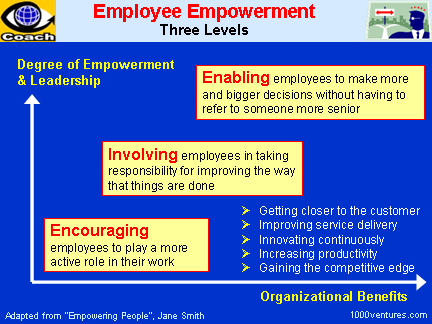Abstract
The Tech Division in our organization needs a change, and a process intervention has been proposed to bring about the desired change. As the H.R. Manager of the Tech Division, I will be raising the following issues in the team O.D. intervention seminar discussion board to implement my proposed idea of change to bring about a much-needed process intervention for organizational development. First, the different types of interventions have been described, then the benefits and importance of employee empowerment have been discussed. Finally, the importance of charge in bringing about a change is concerned with the steps of process intervention required to bring about the desired and much-needed change in the Tech Division.
The Different Types of O.D. Interventions Briefly Described
The different types of interventions have been described as follows (McNamara, 2009):
- Human Process interventions help the organization members enhance themselves and improve the way they work together, so this can be on an individual and group level. This helps change the organization’s contradicting cultures and conflicts that need a change. In this case, human process intervention is required. This includes Training and Development, Team building, etc.
- Techno structural interventions improve the organization’s overall performance by changing the procedures, technology, operations, structures, and roles. E.G., Total Quality Management, Balanced Scorecard, Six Sigma, etc.
- Human Resource Management interventions improve organizational performance by enhancing the performance of individuals and groups within the organization. This is to set goals, monitor them, and attain feedback on practical implementation. E.G., Performance Plans, Performance Appraisals, etc.
- Strategic interventions change many aspects like employees, technologies, products, etc., by focusing on the organization’s interaction with the external environment. E.G., cultural change, strategic planning, etc.
How Does Employee Empowerment Maximize Employee Potential?
Empowerment is giving power and control to the employees who come under the nonmanagers category.

Empowerment motivates employees to work better, and since they are on their own, they learn, so employee education and training increase leading to a competitive workforce. In addition, employees get involved in setting their own goals, so they do everything to achieve them, overall employee contribution in the organization increases, employees respect each other leading to lesser conflicts, lower absenteeism and productivity increases, satisfied employees, competent employees, the need for middle managers is decreased which is a cost-saving proposition for the organization and less resistance from employees to change since they are involved in decision making (Benefits of Empowerment, 2009).
Employee Empowerment is a Common Cornerstone of O.D. and Change Programs. How Does it Create change?
O.D. interventions are powered by organizational effectiveness, which has five elements to be present to create change. Employee empowerment is one of these elements and has been represented metaphorically by “metal” for the organization. People need to be aligned with the organizational vision and mission. People need to be empowered to create a change since a change can occur only when people are willing to make the transition possible. Empowerment breeds innovators since people are free to think and experiment.
Hence, they tend to develop innovative ideas that help run the organization effectively and bring about the desired change. The other elements are leadership denoted by “fire,” corporate culture characterized by “earth,” performance management distinguished by “water,” and corporate capabilities indicated by “wood.” The world has changed, and the new generation works better when empowered since the solution to problems lies with the people now (Kotelnikov, 2009).
The more the employees are empowered, the better they work. Process intervention has steps; clarifying and summarizing which is to clear out any misunderstandings related to the change and licensed individuals will be more willing to listen and understand, synthesizing and generalizing which is to come to a common theme and authorized individuals will be more inclined to combine their own ideas for better implementation, probing and questioning which is to ask questions for better clarification and licensed individuals will explain their views better than anyone else plus they will be motivated to do so, Listening which is essential and authorized individuals will be satisfied with their work and will respect each other thus they will listen to each other, reflecting feelings which is to empathize and licensed individuals will be thinking in a way that they if they do not agree with some one then they will be assigned to point it out and that is good for the organization since all aspects of the situation will be considered for better implantation of the intervention, providing support, coaching and counseling will help individuals to accept the change and perform better up to the mark of the desired change, modeling is when employees are empowered to play a role in the implementation of the intervention which will create the shift effectively as they will be motivated, setting the agenda allows empowered individuals to point out issues if any for better communication that will facilitate the intervention, Feed back is to see what the relevant individuals have to say about the process intervention implemented and structural suggestions for better implementation. Thus, empowerment creates change through these steps of process intervention, which is required in this case of the Tech Division for better performance of the proposed process intervention (Cummings & Worley, 2007).
References
Cummings & Worley (2007). Organizational Development and Change. New Delhi: Thomson- South Western.
Benefits of Empowerment. (2009). Advantages of Empowerment. CiteHR. Web.
Kotelnikov, V. (2009). Balance Organization: 5 Elements. Business Coach. Web.
McNamara, C. (2009). Organizational Change and Development- Types of Interventions in OD. Free Management Library. Web.
